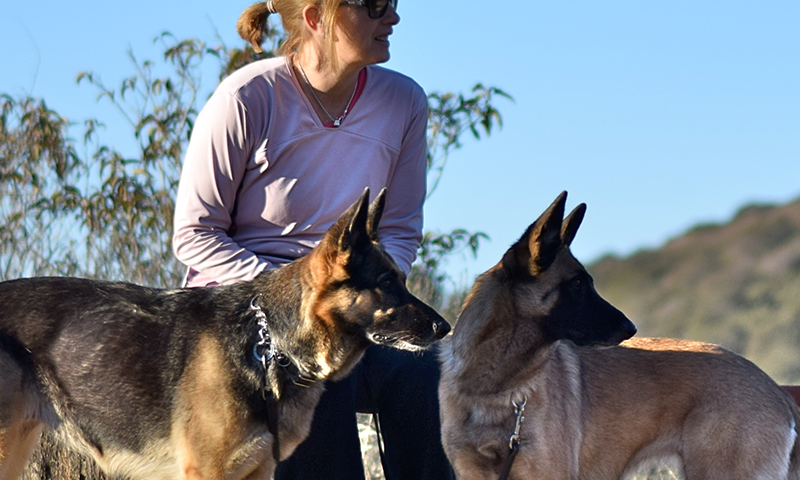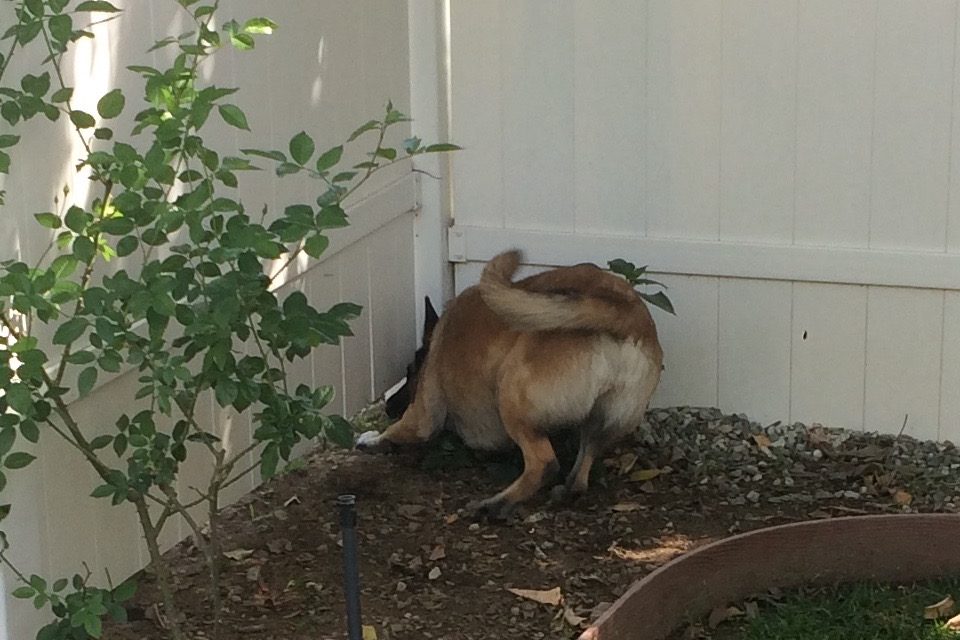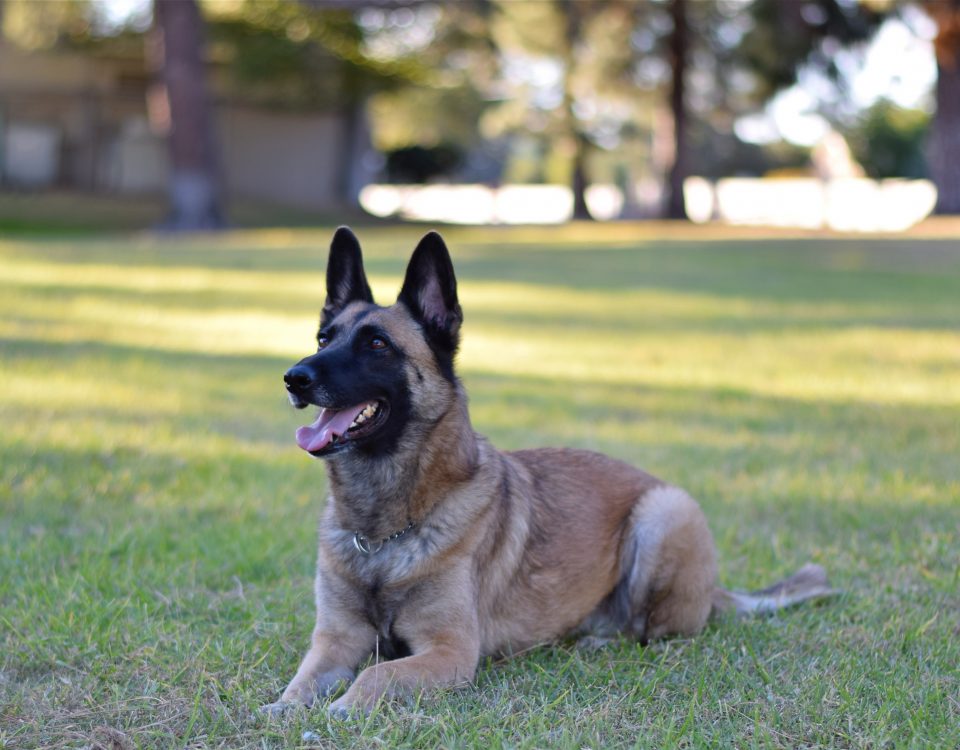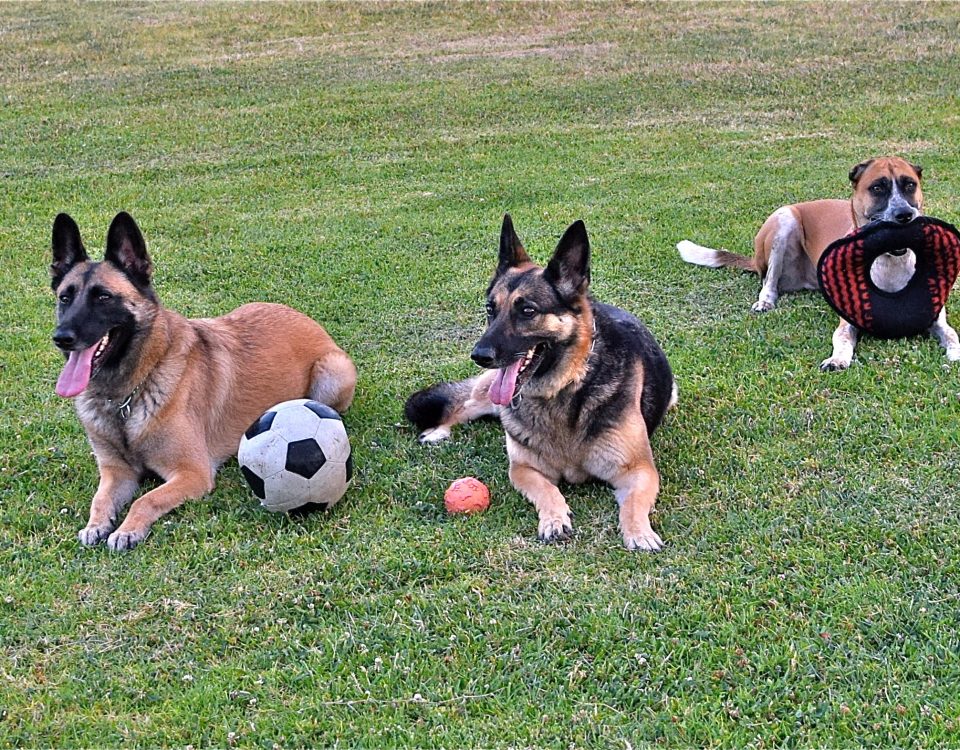You Are Not Doing Him Any Favors
You Are Not Doing Him Any Favors
Having trained dogs and their owners since 1980, I have spent a lot of time with people who are trying to improve the relationship that they have with their dog. I have seen literally thousands of dogs come to me with behaviors that range from a petrified terror of everything in their environment to a frenzied aggression aimed at anyone who gets within 100 feet of them, to crazy, frantic, and completely out of control happiness whenever there is any form of stimulation within their sight.
With dogs that have owners who are serious about training, it has been my pleasure to watch them become obedient, happy, and safe members of the family, no longer a threat to anyone within their reach. This has been accomplished by owners willing to take on the responsibility of good dog ownership.
I also spent 13 years supervising a very busy animal hospital that offered dog and cat boarding as well as medical care, and for 10 years I owned a dog boarding facility. Whether staying at an animal hospital while receiving medical care or boarding while owners are away, many dogs will experience some level of stress during their stay, and the way that stress is manifested can be quite varied. Some dogs refuse to eat. Others bark non-stop for hours on end. Still others are either terrified of everyone and everything or try to attack everyone they see. Many will be so wild and out of control when walked on a leash that they become a risk to anyone who handles them.
While the above mentioned events can cause a dog stress, there are many more scenarios that can have a negative impact on a dog. Something as simple as having guests over for a visit, or going on a walk when there are other people and dogs in the immediate environment can cause a dog to fall apart. This can be hard for many owners to understand when their dog seems to be so normal at home. What is it, then, that causes a dog to become stressed when something outside of his comfort zone happens?
While the inherited temperament of a dog will determine how he interprets events in his life, his upbringing will be largely responsible for the way he reacts to those events. It is these two dynamics that will completely determine how he behaves and what kind of dog he “grows up” to be. One of these dynamics – his inherited temperament – is already determined at birth. It will not change. The other dynamic – his upbringing – is under the control of his owner. How the owner manages his dog will be the main determining factor in how he matures and handles life.
It is not the intent of this article to conduct a comprehensive examination of a dog’s temperament (for a full treatment, see the article ‘How do You Define a Dog’s Temperament?’) but a brief explanation here is needed. Remember that every characteristic of a dog’s temperament is inherited. You can’t change it. There are drugs that some use to mask different parts of the temperament, but it is still the temperament that he was born with. Additionally, every characteristic mentioned here is a part of every dog. What makes each dog unique is the way in which his temperament is put together.
There are three main ‘drives’ – that is to say, motivations, or unctions – that we are concerned with in the raising of a dog. The first is his social drive. This is quite developed at birth and can be seen as the puppies all huddle together for security. As he develops, this is seen in how he bonds (or does not) with his new family, and what he thinks of those outside of his family. The dog that loves his family and does not like anyone else has an inward-only social drive. The dog who loves everyone, both inside and outside of the family, has both an inward and outward social drive. This drive develops early in puppyhood.
The second main drive we are concerned with I will call his ‘go and get’ drive. This drive has three main parts to it and they are all related. They all cause him to ‘go’. His prey drive causes him to chase something, such as a cat or a ball, with the intent of capturing it with his mouth. His hunting drive causes him to search diligently for something which he cannot see. He knows it is out there somewhere and he is determined to find it. His play drive can also be partially attributed to his social drive. He wants to play with you. Even without toys present, he wants to socially engage with you in play. “Let’s have some fun!!” This ‘go and get’ drive does not develop as quickly as his social drive, but by the time he is six months old, his owner will know whether or not he has a dog with a lot of drive. It should be noted that the level of this drive will largely determine how much exercise he will need.
The third drive to consider is the most misunderstood drive in a dog. Called the defense drive, this is the drive that tells him that something is a threat, and that action needs to be taken to eliminate that threat. It is important to understand that what he usually sees as a threat is in reality no threat at all. His high level of defense drive makes him believe that many things are threats. The difficulty in understanding this drive is seen both in the way it can manifest itself and in the way that it develops. In the raw, untrained dog, a percieved threat is eliminated when the dog either chases the threat away, or runs from it. Since defense drive takes about three and one half years to fully develop, a dog can change in the way he handles the threat. A young puppy that would avoid many social contacts may develop into an adult that will aggressively attack those same “threats”. This is all dependent upon the way that his entire temperament develops.
Every dog has what is known as his “dominant drive.” This is the drive that his temperament tells him to default to when presented with something new. To give a simple illustration, picture three puppies, littermates that are four months old, resting together at the top of your driveway. A stranger comes casually walking up the driveway, presenting no emotion at all. The first puppy immediately runs up to him to say, “Hi!” This puppy is being dominated by his social drive. The second puppy runs to his favorite ball, grabs it, and runs to the stranger, hoping to have a play session. This puppy is being dominated by his “go and get” drive. The third puppy slowly back up, growls, and the hair on his back and neck stands up. This puppy is defense dominant.
Covering all three of these drives, much as an umbrella covers people, is a characteristic called sensitivity. Sensitivity is seen in how reactive a dog is to things that happen in his environment. A sensitive dog is more affected by loud noises, sudden movements, anything that is different, displays of strong emotions such as anger, or even by being touched in certain places on his body, such as his feet, head, or rump. The more sensitive a dog, the more readily he will “switch gears” and go from one drive into another. A defense dominant dog that is very sensitive may carefully approach a guest visiting in the house, attempting to be social. However, if the guest suddenly raises an affectionate hand, the dog will immediately switch from social drive to defense drive and either bite or run away.
Underneath all of the drives, either supporting them or allowing them to rest on unsteady footing, is the inherent stability of the entire temperament. If the temperament is a solid one, the dog can be taught to control himself, regardless of which drive dominates him or how sensitive he is. If he is not that stable, a lot of good handling and training may only yield minimal results.
The temperament is not the accomplishment, nor the fault, of the dog or owner. It is a product of breeding, and it will not change. The one changeable factor in the life of the dog is the way in which he is raised. When you own a dog, he is going to be trained. Whether or not you participate in the process, he will become trained. If you don’t take responsibility for raising and training your dog, the environment will readily step in and do the job for you. And the environment has a very proven way of training a dog.
Every single event in life that is noticed by a dog is happening to a temperament that is set in stone. One of the jobs of good dog ownership (training) is to teach the dog how to properly respond to all of these events (distractions). When guidance from the owner is absent, the environment takes over, and the environment just sits back and allows the temperament of the dog to take control. The dog responds to all of the things going on in his life based soley on temperament that he was born with. Additionally, when these events happen on a regular basis, the dog is being constantly reinforced in behavior that is probably unwanted by the dog’s owner. Let us look at a couple of examples.
Rocky is an eight month old Labrador retriever that is high in both his go-get drive and his social drive. He does have some defense drive but it really hasn’t developed enough to be noticed by his owners. Since things at home and work have gotten busy, Rocky is spending most of his time outside. Now that his morning walks have disappeared, Rocky starts each day with a full tank of gas and no real direction as to how he should use it. With an elementary school just down the street, Rocky starts trying to get the kids walking by his house every morning and afternoon to engage him in some sort of activity. The kids always seem to be in a hurry and never come to play. In an attempt to get the kid’s attention, Rocky begins to bark at them as they go by. His barking doesn’t get them to come to the fence, but they do start to respond. Sometimes they just talk to him as they walk by, but sometimes they yell at him and tease him.
As the days and weeks go by, Rocky begins to get very frustrated. His drives are never fulfilled, and the restraint that the fence provides just makes him try harder to get to the kids. (to fully understand what restraint does to a dog, see the article ‘Restraint – the big enemy of training’) As time continues to go by, Rocky’s defense drive has been slowly but surely developing. His owners ignore their neighbors concernes that Rocky seems to be acting a bit aggressively at the fence as the kids go by. They know that he is really just a happy, friendly dog. To make matters worse, because of Rocky’s wild behavior around their own kids, he has now become pretty much an outside dog.
In this example, Rocky has been very thoroughly trained. Not by his owners, but by the environment. There is less and less that his owners can do with him because of his wild behavior. Whether at the Vet’s office, the local boarding facility, or at home when guests arrive, Rocky has become an out of control dog. Because his owners relinquished all raising and training to the ever-vigilant environment, Rocky will likely end up at a shelter, wondering what happened to his family. His owners did not do him any favors!
Penny was a small mixed terrier about eight years old. She was rescued from a shelter six months ago, and the only history that the shelter had was that she had been a stray living on the streets. Her new owners loved her very much and felt bad about the past she had, so they did everything they could to protect her from anything that seemed to be a threat. They figured that her fear of people and other dogs was due to the fact that she was probably mistreated in her previous home and chased by other stray dogs once she found herself living on the streets. When she hid from house guests and barked furiously at dogs she saw on a walk, her new owners understood, explaining to everyone that it was because she had a bad past.
As Penny grew more accustomed to her new family and more comfortable in her new environment, she began to show less avoidance and more aggression toward people who came to visit. Her owners would try to tell her that it was ok, but they never tried too hard because, after all, people in her past had been mean to her, and that justified her aggression. As she became more and more reinforced in her behavior, it got to the point where nobody outside of her family could touch her. Then it was time for the annual visit back east to the Grandparents house. Since none of their friends could handle her, Penny would have to stay at a boarding facility for two weeks. Her owners tried to reassure the people who ran the facility. “Don’t worry”, they said. “She is a rescued dog. She’s still a bit shy with people she doesn’t know, but we are working on it.”
Penny’s owners had been working on it. They had worked hard on allowing her to reinforce defensive behaviors that did nothing to help her deal with the stresses that life inevitably has to offer. They passively stood to the side and allowed the environment to dictate scenarios to Penny, and they allowed her temperament and past life experiences to dictate her responses. Now, at the boarding facility, she would have no choice but to be handled by strangers. Undoubtedly, this was going to be an extremely stressful two weeks for her. By refusing to take the time needed to learn how to help her overcome a bad past, her owners did not do her any favors!
These two examples are played out, with countless variations, every day by dog owners everywhere. And while the dogs in the two scenarios mentioned above are not to blame for their behavior, they are the ones that pay the price. The emotional result suffered by these dogs is a life full of stress and frustration, and the physical result, more often than not, is being given up (gotten rid of) for “re-homing”.
Owning a dog is the same thing as training a dog. While the temperament of a dog is inherited and will not change, the way he is raised – by either the environment or the owners – will determine how he matures and learns to deal with a life full of challenging distractions. It is the responsibility of the owner to raise and train his dog in such a way that allows him to enjoy life to the fullest without the stress that comes from being an environmentally trained dog. Remember — if you aren’t the one doing it, it still gets done, and when that happens…………you are not doing him any favors!






